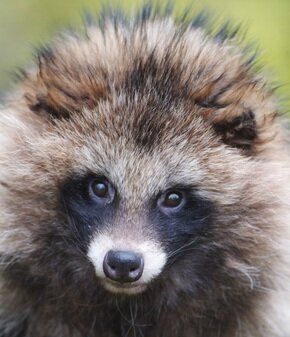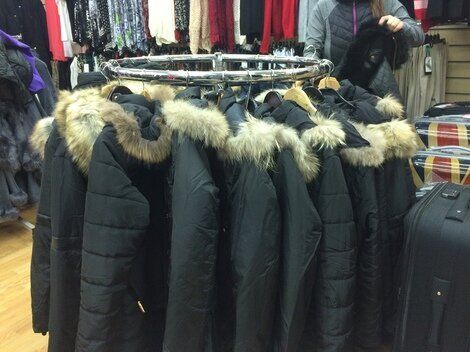Walking down many UK high-streets this winter has been like stumbling on to the set of Game of Thrones: barely a minute goes by without spotting someone with a thick animal fur mane on a jacket hood, or a big ball of animal fur on top of a bobble hat.
Humane Society International UK's recent high-street investigations, featured in the Sun and the Mail Online, have found an alarming volume of real animal fur for sale and not, as many might expect, just at high end stores like Harrods. Across five cities we've had no difficulty in finding hundreds of garments for sale with real animal fur, usually as trim, with prices as low as £3 for a hat and £20 for a coat.
This is both depressing and perplexing. We are, if we believe our own hype, a nation of animal lovers. Opinion polls tell us that 93% of people say they would not buy or wear real animal fur, and historically our governments and industry have listened and acted, most notably in 2000 by introducing a UK ban on fur farming.
So we'd washed our hands of the cruelty of the fur industry? Sadly not. HM Revenue and Customs reports indicate that the UK imported £62,631,106 worth of fur articles in 2014 with a net domestic market value (after exports) of £26,948,130. Here's the disconnect: we don't farm animals for fur, and we claim not to want to buy it, so why are so many people wearing it and why are so many independent stores and market stalls full of it?
I think a major part of the answer is that many people are unaware they are selling, or buying, real animal fur. For many, fur is still assumed to be an expensive preserve of the wealthy. Many shops around Bond Street and other affluent areas still flaunt the lifeless pelts of pitiful animals in their store windows, but thanks to large-scale industrial fur farms in Europe, China and elsewhere, where millions of animals are raised and killed each year in woefully inadequate intensive conditions, fur is cheap, really cheap.

Millions of raccoon dogs like this languish in barren cages in China and elsewhere. credit: blickwinkel
Online wholesalers bulk-sell real rabbit fur trim for just £1 per metre, 70cm raccoon dog fur hood trim for £3 and raccoon dog fur pompoms for just 30p. At those prices it's easy to see how fur items make their way to dozens of stalls at Camden market, cheap stores in Dalston and Brixton and elsewhere. So, do customers realise that the £10 hat they're looking at has a piece of raccoon dog on top? Our polling data and consumer interviews suggest not.
Most people seeking to avoid buying real animal fur use a variety of cues when trying to distinguish real from fake. In our recent YouGov poll, the top indicator used by 50% of people to identify faux fur is the fur feeling synthetic, followed a close second by low cost: 47% of people would think fur was fake if the price was cheap. Unfortunately neither of these are reliable indicators; the look and feel of faux fur can be hard to distinguish from animal fur, and deceptively low prices are potentially leading would-be ethical consumers to invest in the inherent cruelty of the fur industry. (Tip: use our online guide to help you spot the difference between real and faux fur!)

Spot the difference: a shop in north London selling a mixture of fur and real fur-trimmed coats, all around £40, none labelled. credit: HSI UK
But there's one even more critical factor that is likely misleading shoppers into buying animal fur: what's on - or not on - the label. At present there is there is no overarching legal requirement for garments and products containing animal fur to list that information on the label. Consumers need clear and consistent labeling of animal fur, but the EU textile labeling regulation is anything but.
Firstly, it doesn't apply to footwear, and under the Footwear labelling regulations (1995) only the main material must be labelled, there is no requirement to label trims. Secondly, items only have to indicate animal fur on the label if they contain more than 80% textile by weight, so don't forget your scales when you shop! That means that a hat comprising 79% textile and 21% fur, doesn't need a label mentioning the fur at all; perversely the more fur in a garment the less the legal requirement to label it. Thirdly, even where this labelling law does apply, it merely requires the garment to include a somewhat cryptic label stating it "contains non-textile parts of animal origin," which arguably invites confusion. Since the provision also applies to other animal products, like leather and duck feathers, how are consumers supposed to know if and when it refers to fur?
The final indictment is that in practice we've found extremely high non-compliance with this law, 87% of 163 items we found didn't carry the label.
As a consumer society we expect full disclosure on the products we buy. In food labelling, for example, every trace ingredient must be clearly listed. Consumers expect the same with fur: 85% of the UK public expects an item containing animal fur should be clearly labelled as such.
Obviously, I'd prefer that nobody bought animal fur. But at the very least we need an EU fur labelling system that clearly tells people when an item contains animal fur, which animal species used to own the fur, which country it lived in and what method of farming and killing was used. Such labelling requirements are already in place in the US and Switzerland. Only then can people make an informed choice, and leave fur cruelty on the shelf.
Find out how you can help our Make It Fake campaign, and sign our fur-free pledge!
